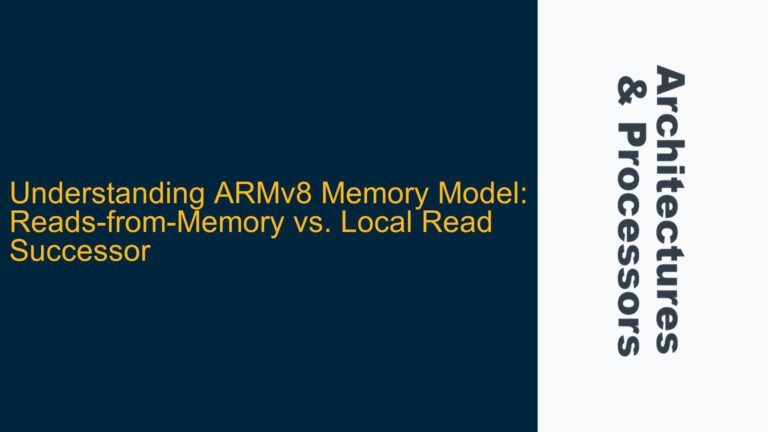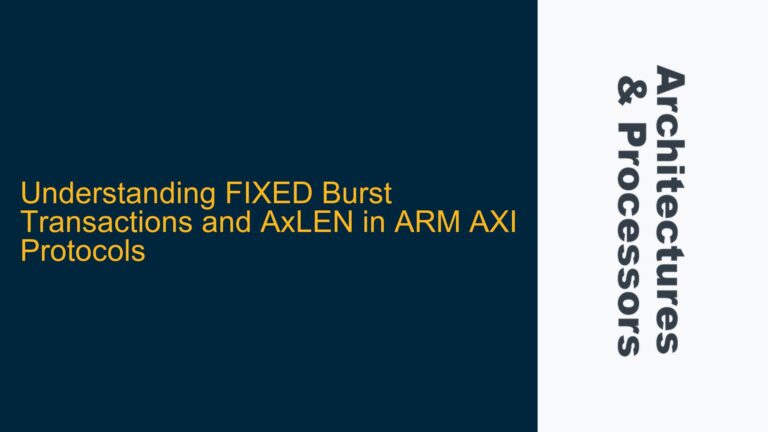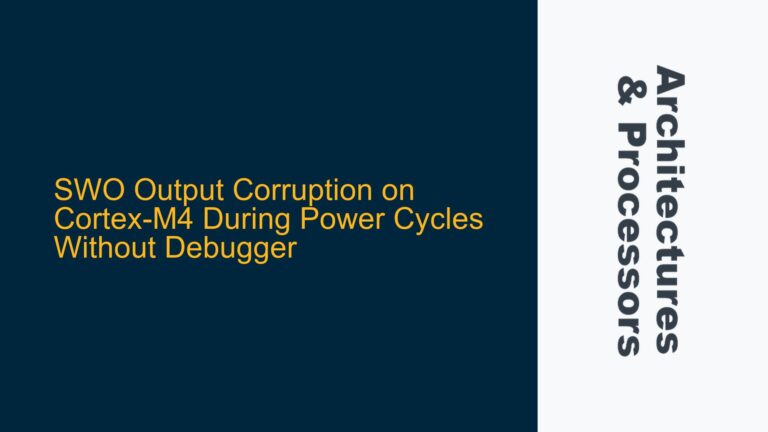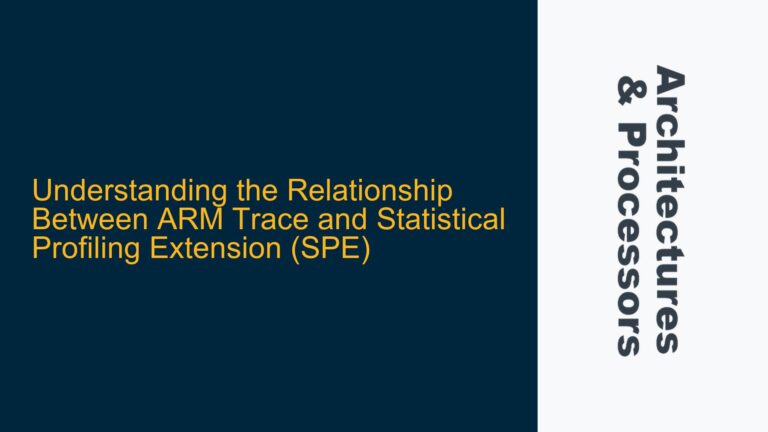ARM Cortex-M Tail-Chaining Mechanism in Nested Vectored Interrupt Controller (NVIC)
Tail-chaining is a critical optimization feature in the ARM Cortex-M series processors, specifically implemented within the Nested Vectored Interrupt Controller (NVIC). This mechanism allows the processor to handle back-to-back interrupts efficiently by minimizing the overhead associated with context switching. When multiple interrupts are pending, the NVIC evaluates their priorities and determines whether to perform a full context save and restore or to chain the interrupts directly. Tail-chaining occurs when a pending interrupt has a higher priority than all currently stacked exceptions, enabling the processor to skip the redundant push and pop operations of the register state. This optimization is particularly beneficial in real-time systems where interrupt latency and throughput are critical performance metrics.
The NVIC is designed to manage interrupt priorities, preemption, and nesting efficiently. Tail-chaining leverages the NVIC’s ability to prioritize interrupts and streamline their execution. When an interrupt service routine (ISR) completes, the NVIC checks for pending interrupts. If a higher-priority interrupt is pending, the processor transitions directly to the new ISR without restoring the context of the previous ISR. This eliminates the need to save and restore the register state multiple times, reducing the overall interrupt handling time.
The tail-chaining mechanism is particularly effective in scenarios where multiple interrupts occur in rapid succession. For example, in a system handling high-frequency sensor data or communication protocols, tail-chaining ensures that the processor can respond to new interrupts with minimal delay. This feature is a key differentiator for ARM Cortex-M processors in embedded systems, where resource constraints and real-time performance are paramount.
Omission of Tail-Chaining Due to Improper Interrupt Prioritization and Stack Management
One of the primary reasons tail-chaining may not occur as expected is improper interrupt prioritization. The NVIC relies on the priority levels assigned to each interrupt to determine whether tail-chaining is possible. If interrupts are not prioritized correctly, the NVIC may not identify opportunities for tail-chaining, leading to unnecessary context switches. For instance, if two interrupts have the same priority or if a lower-priority interrupt is pending when a higher-priority interrupt completes, the NVIC will perform a full context restore and save, negating the benefits of tail-chaining.
Another common cause is inefficient stack management. Tail-chaining relies on the stack being in a consistent state between interrupts. If the stack is corrupted or improperly managed, the NVIC may be unable to chain interrupts effectively. This can occur due to stack overflows, incorrect stack pointer initialization, or improper use of stack frames within ISRs. Additionally, if an ISR modifies the stack in a way that disrupts the expected state, tail-chaining may fail.
A third factor is the presence of non-interruptible code sections. If an ISR includes critical sections that disable interrupts for extended periods, the NVIC may be unable to detect pending interrupts in time to initiate tail-chaining. This can result in increased interrupt latency and reduced system responsiveness. Proper use of interrupt masking and prioritization is essential to ensure that tail-chaining can occur when appropriate.
Implementing Tail-Chaining with Proper Interrupt Configuration and Debugging Techniques
To enable and optimize tail-chaining in ARM Cortex-M processors, developers must ensure proper interrupt configuration and stack management. The following steps outline the process for implementing tail-chaining effectively:
-
Interrupt Prioritization: Assign unique priority levels to interrupts based on their criticality and timing requirements. The NVIC uses these priorities to determine whether tail-chaining is possible. Avoid assigning the same priority to multiple interrupts unless absolutely necessary. Use the NVIC’s priority grouping feature to allocate priority bits appropriately between preemption and subpriority levels.
-
Stack Management: Ensure that the stack is properly initialized and has sufficient space to handle nested interrupts. Monitor stack usage during development to detect and prevent overflows. Use tools such as stack analysis utilities and debuggers to verify stack integrity. Avoid modifying the stack pointer or stack frames within ISRs unless explicitly required.
-
Interrupt Masking: Minimize the use of interrupt masking within ISRs. If critical sections are necessary, keep them as short as possible to allow the NVIC to detect pending interrupts promptly. Use the BASEPRI register to mask interrupts selectively based on priority, rather than disabling all interrupts globally.
-
Debugging and Verification: Use debugging tools to monitor interrupt behavior and verify that tail-chaining is occurring as expected. Trace interrupt entry and exit sequences using a debugger or trace capture tool. Analyze the timing and sequence of interrupts to identify missed tail-chaining opportunities. Adjust interrupt priorities and configurations based on observed behavior.
-
Performance Optimization: Measure the impact of tail-chaining on system performance using profiling tools. Compare interrupt latency and throughput with and without tail-chaining enabled. Optimize ISRs to minimize execution time and maximize the benefits of tail-chaining. Consider using hardware features such as DMA to offload data transfer tasks and reduce interrupt frequency.
By following these steps, developers can leverage the tail-chaining mechanism in ARM Cortex-M processors to achieve efficient and responsive interrupt handling. Proper configuration and debugging are essential to ensure that tail-chaining operates as intended, minimizing overhead and maximizing system performance.
Advanced Techniques for Tail-Chaining Optimization
For advanced users, additional techniques can further enhance the effectiveness of tail-chaining. These include:
-
Dynamic Priority Adjustment: Modify interrupt priorities dynamically based on system state or workload. This allows the NVIC to adapt to changing conditions and optimize tail-chaining opportunities. For example, increase the priority of time-critical interrupts during high-load scenarios.
-
Interrupt Chaining Patterns: Design ISRs to facilitate tail-chaining by minimizing state changes and avoiding unnecessary operations. Group related interrupts together and use shared data structures to reduce context switching overhead.
-
Hardware Acceleration: Utilize hardware features such as the Memory Protection Unit (MPU) or Floating-Point Unit (FPU) to offload tasks from ISRs. This reduces the execution time of ISRs and increases the likelihood of tail-chaining.
-
Power Management Integration: Combine tail-chaining with low-power modes to optimize energy efficiency. Use the NVIC’s wake-up interrupt controller (WIC) to manage interrupts during sleep modes and ensure rapid response to high-priority events.
By implementing these advanced techniques, developers can unlock the full potential of tail-chaining in ARM Cortex-M processors, achieving superior performance and efficiency in embedded systems.






